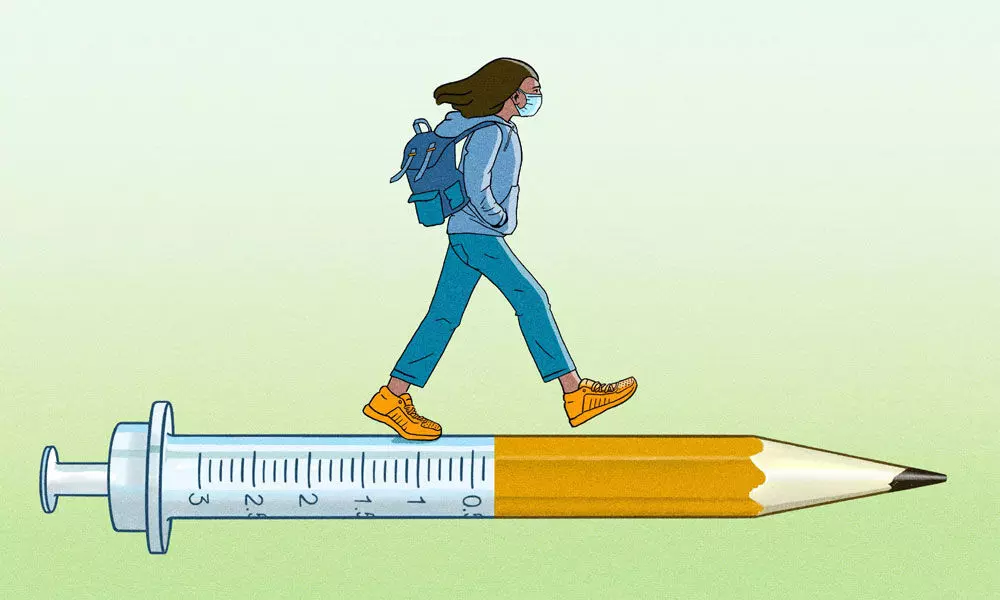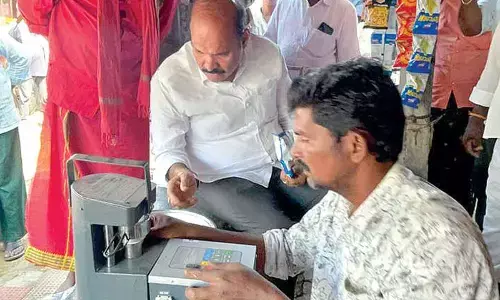Virus and vaccine lessons from 2021 for better 2022

Virus and vaccine lessons from 2021 for better 2022
We bid adieu to 2021 with mixed feelings of sorrow and joy.
We bid adieu to 2021 with mixed feelings of sorrow and joy. 'Sorrow', because the year witnessed an unprecedented peak of the COVID-19 pandemic and 'joy', because it exhibited the end of the peak, owing to vaccinations and socio-economic restrictions.
In sum, 2021 educated us all on how to be vigilant and handle adversities. It did not end there. The year 2021 heralded the outbreak of a third wave, with the emergence of a newly mutated variant,Omicron. With the start of the New Year, it is important to retrospect and learn from the major socio-economic events in 2021.
2021 began on a hopeful note, with the promise of vaccination. We must acknowledge the laudable efforts of scientists, doctors, nurses, the police and frontline warriors.
However, with the easing of lockdown restrictions and prevailing skepticism and criticism about vaccination, the response to the inoculation drive in India largely remained a damp squib.
This led to the emergence of the 'deadly' second wave from March 2021 to June 2021. However, post-second wave, the situation improved. So what are the lessons from this experience for India?
Data and analysis
Against this backdrop, we at the Indian Institute of Science performed a quantitative assessment of the indicators pertaining to vaccination, infection rate and socio-economic indicators. These included stringency index, purchasing manager index (PMI) and consumer confidence index (CCI).
Conventional statistical techniques including correlation, regression and time series were employed on these variables sourced from Oxford University's venture Our World in Data.
In the analysis, shown in the figure below, vaccination rate indicates the percentage of the fully vaccinated population in India. Infection rate is measured by the percentage of positive cases out of the total tests.
Stringency index measures the intensity of restrictions put in the country. PMI, administered by ingformation provider, IHS Markit, is the forward-looking indicator of producers' optimism about order books.
Finally, CCI, administered by global research association, The Conference Board, indicates the level of consumers' optimism regarding their expected financial situation. Broadly, PMI and CCI indicate economic health, the former from the producers' perspective and the latter from the consumers' perspective.
Importance of vaccinations and restrictions
In a democratic country like India, local and national restrictions (such as lockdowns and constrained capacity operations in institutions) sounded odd but were implemented at various levels and time periods.
The stringency index, which indicates the intensity of such restrictions on economic activities, started to ease from the start of 2021. The easing continued till March 2021.
This easing, coupled with festivities and mass gatherings, caused the second wave starting March 2021. This resulted in an unprecedented high infection rate (a positivity rate of more than 15 per cent) and deterioration in economic health as indicated by nosediving PMI and CCI (both being less than 50, indicating economic contraction).
Restrictions started tightening from March 2021. But it was too late to curb the spread. The vaccination of less than a per cent of the population could not help.
The rate of inoculation was boosted due to the persistent efforts of frontline workers and reached four per cent by June 2021. In addition to vaccination, restrictions also helped in containing the viral spread, which cooled down in June 2021.
Post-June 2021, economic indicators started improving, as indicated by an uptick in PMI and CCI. From July 2021, PMI and CCI started exceeding the level of 50, indicating economic recovery, though at a moderate rate.
All this clearly vindicates that vaccination played a vital role in the 'infected' socio-economic scenario of India. It can be observed that increasing levels of vaccination helped in containing infection and subsequently easing restrictions, which, in turn, boosted economic health.
To this end, we extended our analysis to quantify the impact of inoculation on infection rates and levels of restriction.
We analysed the correlation between the daily vaccination as well as infection rate (COVID-19 positive rate in testing) for the period post the second wave (ie from July 2021) when the data is stable and free from outliers.
We found a statistically significant inverse correlation (95 per cent) between vaccination and infection rates. Also, each per cent increase in vaccination mitigates the infection rate by 0.05 per cent, indicating the saving of lives.
Similarly, we analysed the correlation between the daily vaccination rate and stringency index. We found a statistically significant inverse correlation (87 per cent) between these. Each per cent increase in vaccination eases the restriction by 1.17 index points, indicating the easing of economic activities.
Overall, it can be statistically asserted that vaccination is effective in mitigating infection and easing the restrictions on the economy. These together help in boosting the confidence of consumers and producers — the two vital agents in our demand-driven economy.
Way forward
Inoculation is thus an important instrument to handle the COVID-19-induced pandemic. It is vital to increase the rate of vaccination together with booster dozes to fight against SARS-CoV-2.
If we continue with the current-month vaccination growth rate of about one per cent, we will be able to inoculate the country by March 2021.
Apart from boosting inoculation, it is also important to focus on three things learnt from last year: 1) Memory strengthening 2) Infrastructure strengthening and 3) Timely restriction. We must remember the loss of lives and livelihood in the last infectious wave and strictly continue adhering to COVID-19-appropriate behavior. We have observed the importance of health infrastructure during the second wave.
It is essential to develop, support and enhance our health institutions and health workers to be ready for future uncertainties. Finally, the requirements of local restrictions, wherever essential, must be assessed and announced in a timely manner before it is too late.
Late announcements of restrictions lead to infection severity and stricter restrictions. In sum, prevention is always better than cure. Let us learn from 2021 and implement the lessons for a better 2022.
(Swapnil Soni is Senior Research Scholar, Department of Management Studies, Indian Institute of Science, Bengaluru. Views expressed are the author's own and don't necessarily reflect those of Down To Earth)















